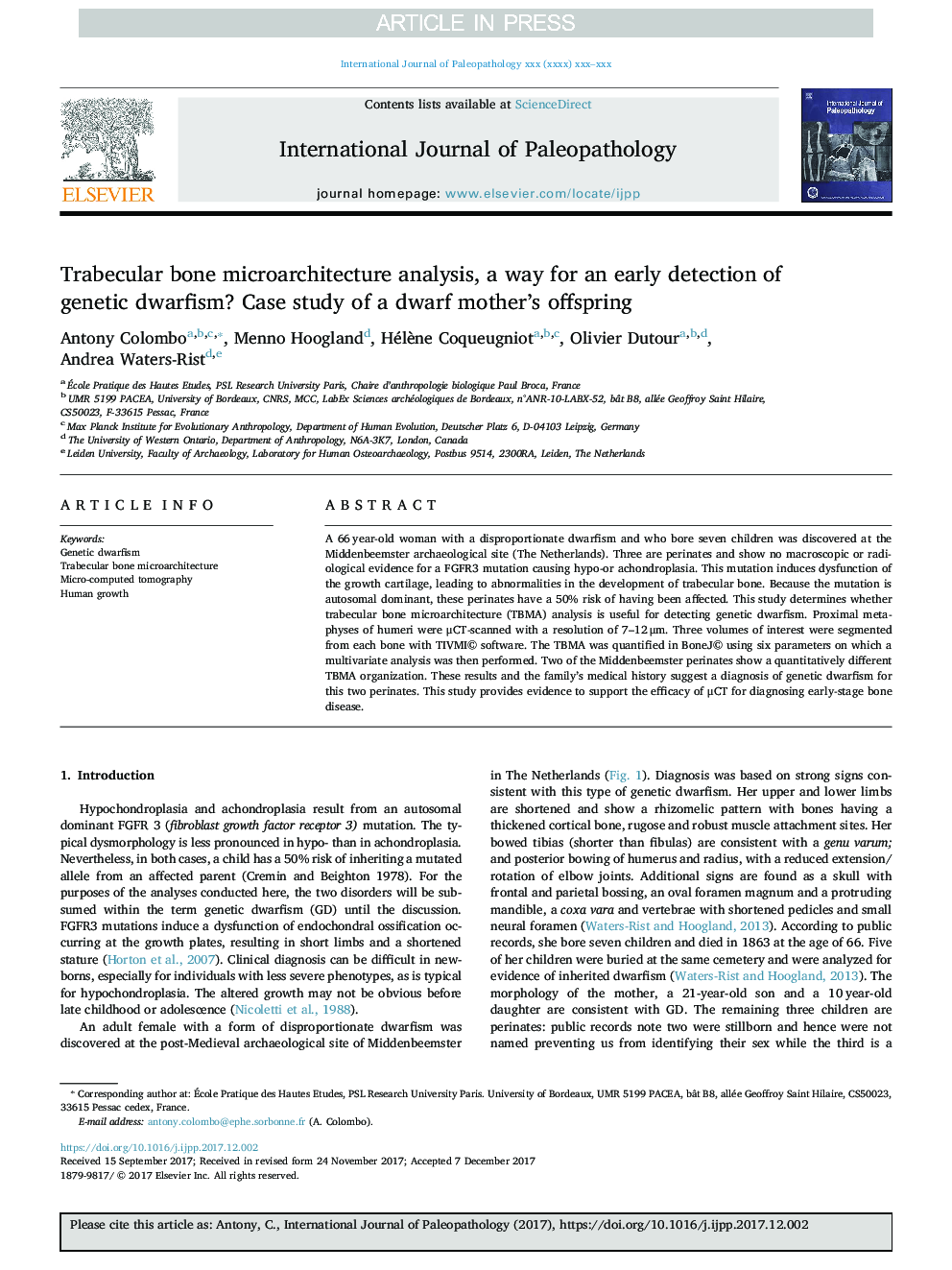| Article ID | Journal | Published Year | Pages | File Type |
|---|---|---|---|---|
| 6554783 | International Journal of Paleopathology | 2018 | 7 Pages |
Abstract
A 66â¯year-old woman with a disproportionate dwarfism and who bore seven children was discovered at the Middenbeemster archaeological site (The Netherlands). Three are perinates and show no macroscopic or radiological evidence for a FGFR3 mutation causing hypo-or achondroplasia. This mutation induces dysfunction of the growth cartilage, leading to abnormalities in the development of trabecular bone. Because the mutation is autosomal dominant, these perinates have a 50% risk of having been affected. This study determines whether trabecular bone microarchitecture (TBMA) analysis is useful for detecting genetic dwarfism. Proximal metaphyses of humeri were μCT-scanned with a resolution of 7-12â¯Î¼m. Three volumes of interest were segmented from each bone with TIVMI© software. The TBMA was quantified in BoneJ© using six parameters on which a multivariate analysis was then performed. Two of the Middenbeemster perinates show a quantitatively different TBMA organization. These results and the family's medical history suggest a diagnosis of genetic dwarfism for this two perinates. This study provides evidence to support the efficacy of μCT for diagnosing early-stage bone disease.
Related Topics
Life Sciences
Biochemistry, Genetics and Molecular Biology
Physiology
Authors
Antony Colombo, Menno Hoogland, Hélène Coqueugniot, Olivier Dutour, Andrea Waters-Rist,
